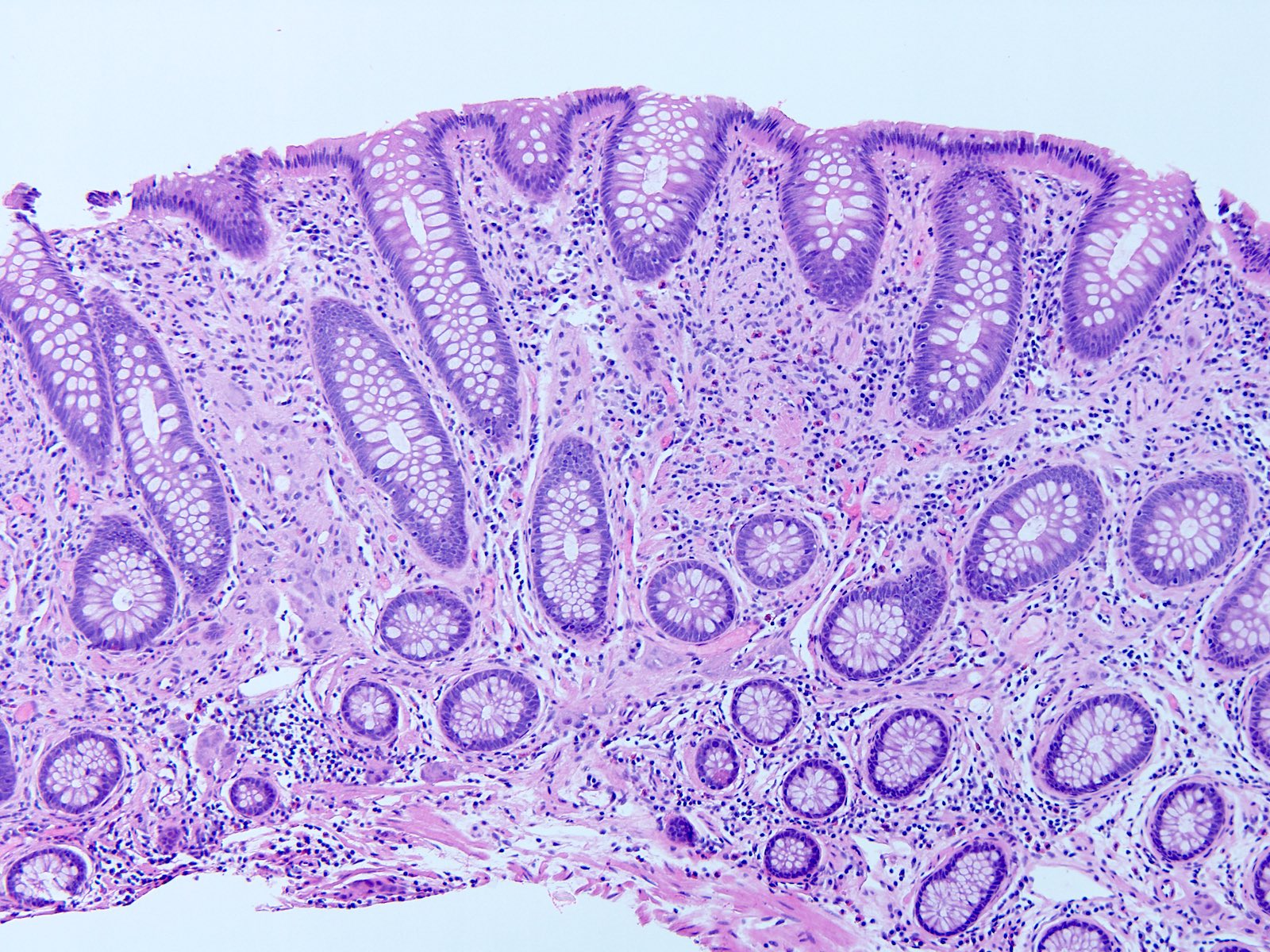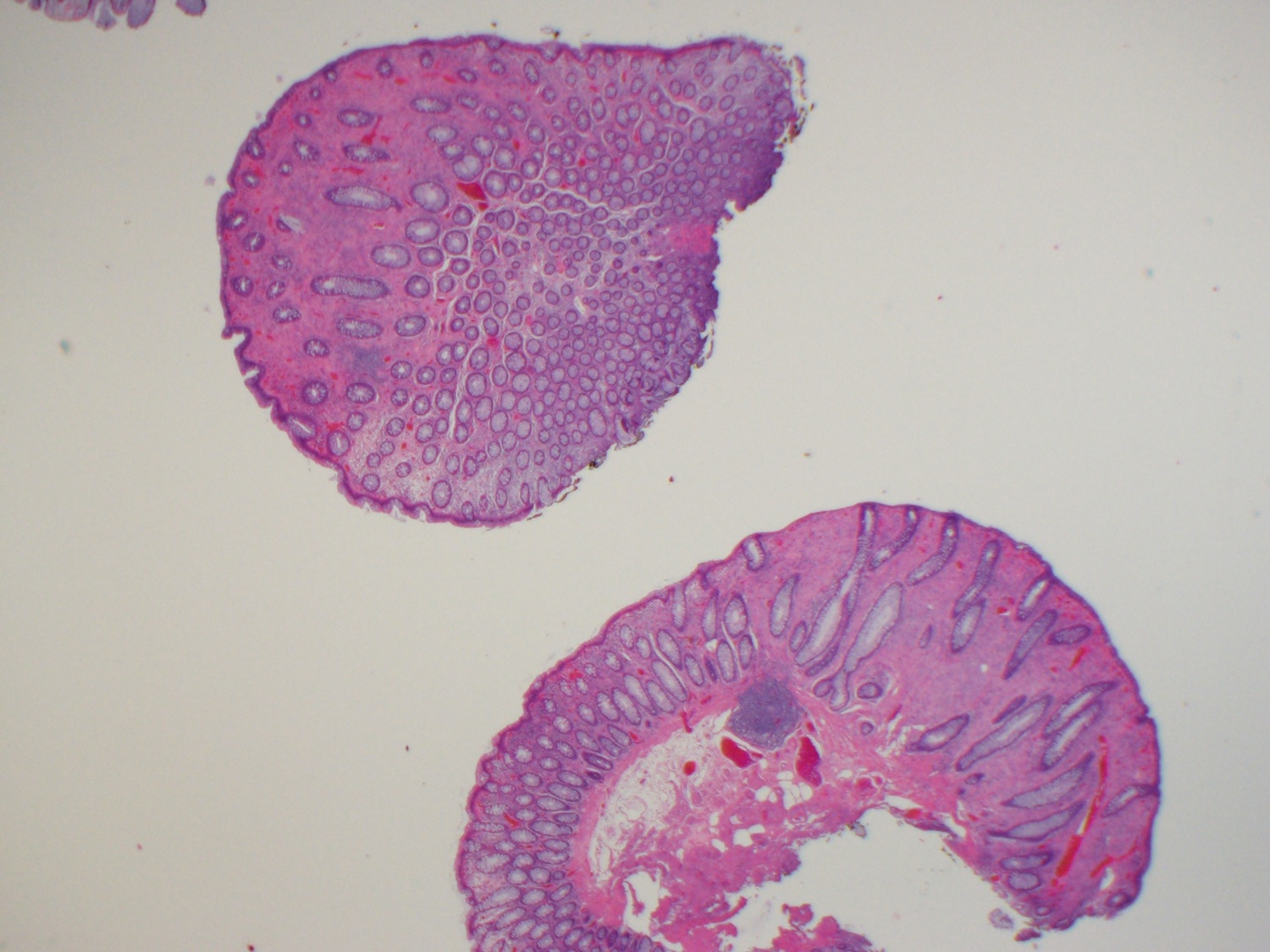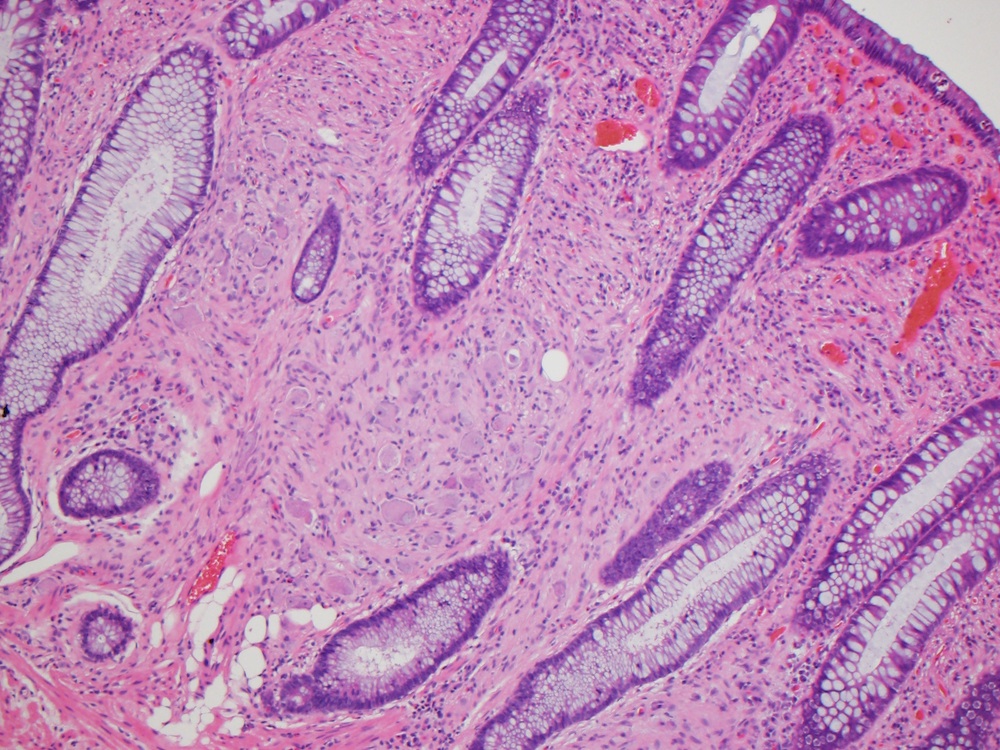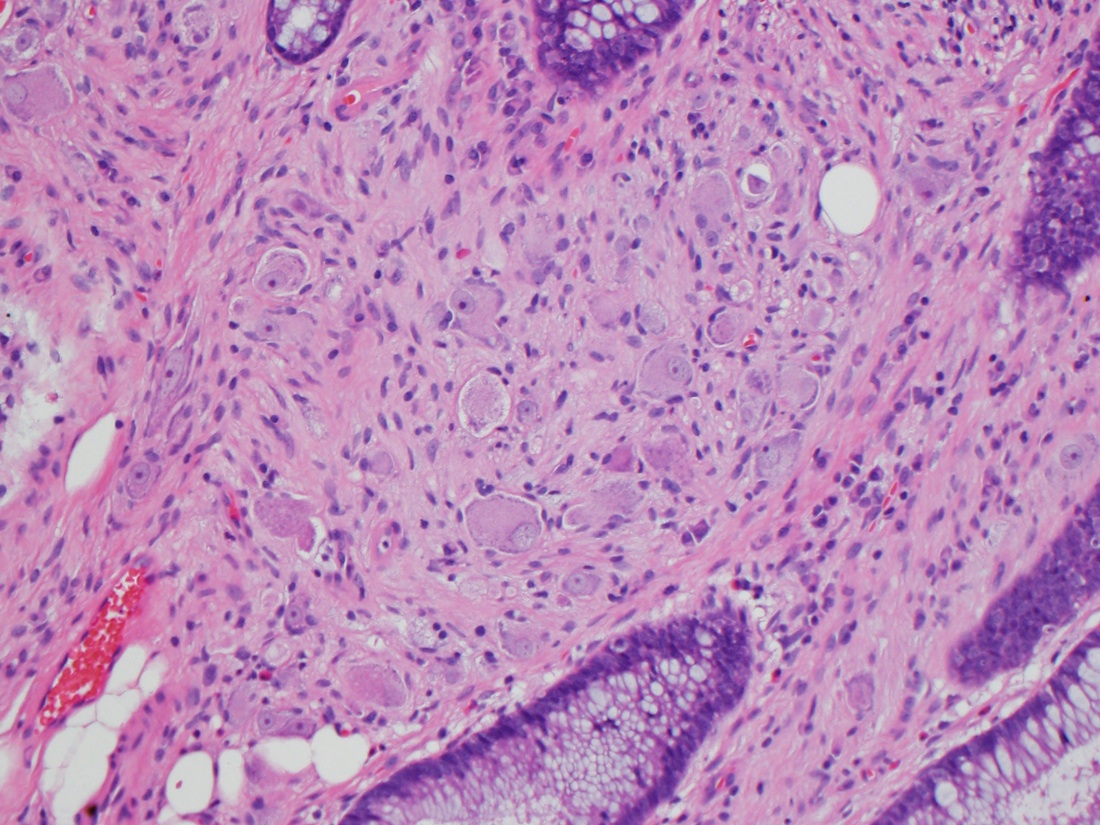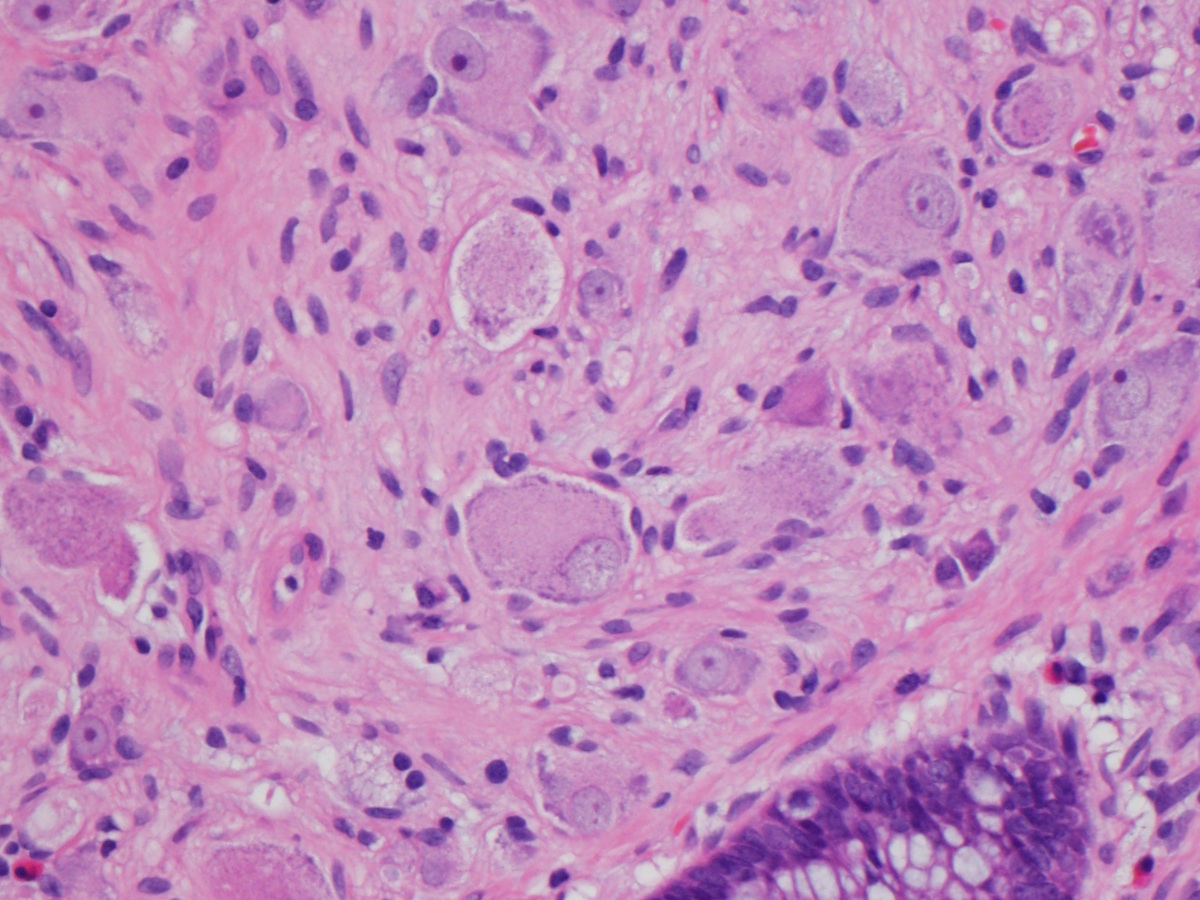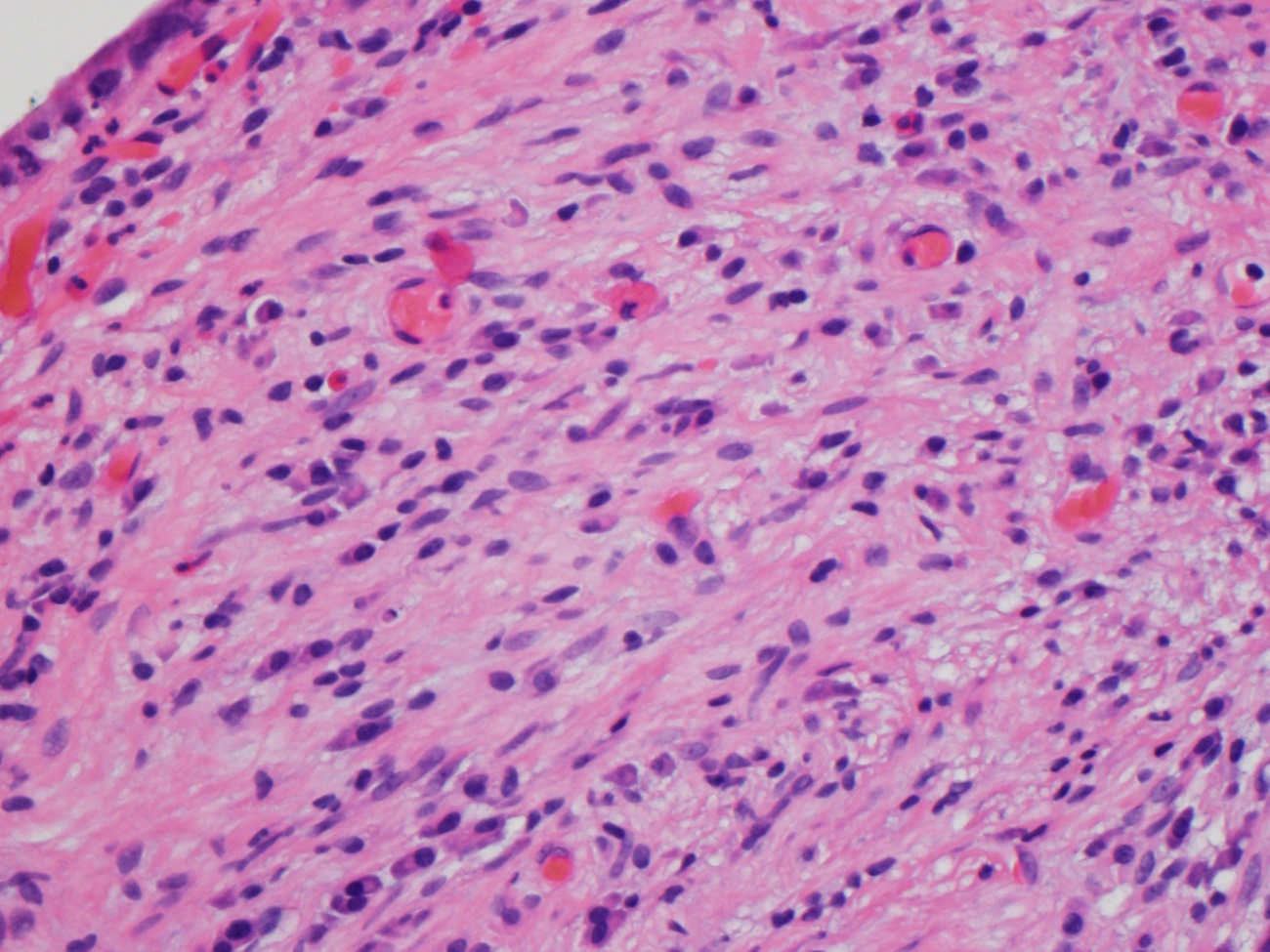Table of Contents
Definition / general | Essential features | Sites | Clinical features | Diagnosis | Case reports | Treatment | Clinical images | Gross description | Microscopic (histologic) description | Microscopic (histologic) images | Positive stains | Sample pathology report | Differential diagnosis | Board review style question #1 | Board review style answer #1Cite this page: Gonzalez RS. Ganglioneuroma. PathologyOutlines.com website. https://www.pathologyoutlines.com/topic/colontumorganglioneuroma.html. Accessed April 2nd, 2025.
Definition / general
- Benign mesenchymal polyp in the colon
- Unrelated to lesion of the same name in the adrenal gland
Essential features
- Uncommon colonic mesenchymal polyp with prominent ganglion cells
- Associated with Cowden syndrome, especially if multiple polyps
Sites
- Colorectum is most common site in gastrointestinal tract
Clinical features
- Patients with multiple intestinal ganglioneuromas may have Cowden syndrome
- Solitary intestinal ganglioneuromas usually incidental and of no clinical consequence (Am J Surg Pathol 1994;18:250)
- May rarely cause intussusception (J Pediatr Surg 2009;44:e17)
Diagnosis
- Typically found during screening colonoscopy
Case reports
- 48 year old woman with small sessile colon polyp (Diagn Pathol 2008;3:20)
- 65 year old man with solitary ascending colon polyp (Case Rep Gastroenterol 2017;11:434)
Treatment
- Polypectomy generally curative
Gross description
- Usually small (a few millimeters) but can rarely grow to 2 - 3 cm
Microscopic (histologic) description
- Expansion of the lamina propria by bland spindled mesenchymal cells (Schwann cells), lacking atypia or mitotic figures
- Ganglion cells present within the expanded region; may be rare or abundant
Microscopic (histologic) images
Positive stains
- S100 (Schwann cells); synaptophysin, NSE (ganglion cells) (Arch Pathol Lab Med 2011;135:1311)
Sample pathology report
- Transverse colon, polypectomy:
- Ganglioneuroma
Differential diagnosis
- Ganglioneuromatosis:
- Nodular expansile confluence of ganglioneuromatous tissue, often in patients with MEN IIb or neurofibromatosis
- Perineurioma:
- Negative for S100
- Mucosal Schwann cell hamartoma:
- Both lesions S100+ but ganglioneuroma has ganglion cells
Board review style question #1
A 60 year old patient undergoes colonoscopy and is found to have a solitary ganglioneuroma. What should be the next step in working up this patient?
- Colectomy for possible ganglioneuromatosis
- Follow up colonoscopy in 1 year
- Genetic screening for Cowden syndrome
- Imaging to search for ganglioneuromas at other sites
- No further workup needed
Board review style answer #1






